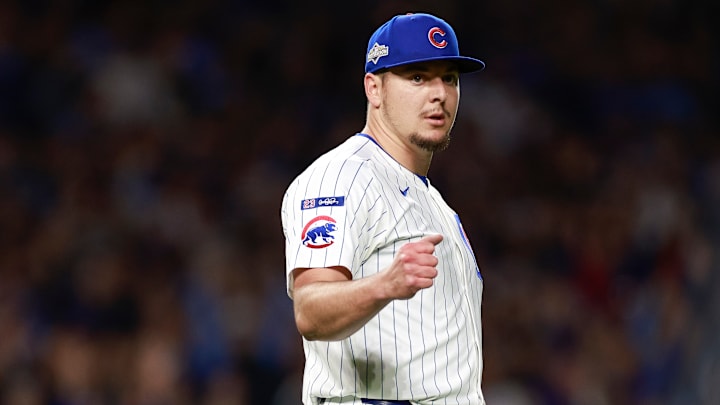The New York Mets didn’t just dabble in the “reliever-to-starter” experiment last winter — they dove in headfirst and stuck the landing. Clay Holmes arrived in Queens with a reputation as a late-inning hammer, and all he did in his first full year as a starter was take the ball on Opening Day and grind through 165 2/3 innings with a 3.53 ERA.
He wasn’t perfect, but he was reliable, durable, and definitely good enough that by the end of the season, it was hard to remember he’d spent most of his big-league life living in the bullpen. That kind of outcome tends to change how a front office thinks about risk — and about where the next undervalued arm might be hiding.
Brad Keller’s Cubs revival should put him squarely on Mets’ radar
Which is why a name like Brad Keller suddenly feels very on-brand for this version of the Mets. The right-hander just rebuilt his value on the North Side of Chicago, morphing from rotation castoff into one of the most trusted firemen in the Cubs’ bullpen. Over 69 2/3 innings, Keller sliced through hitters for a 2.07 ERA, racked up a pile of holds and a few saves, and spent the stretch run handling the heaviest leverage Counsell could throw at him. Teams around the league are already kicking the tires on whether he’s a high-end reliever, a starter conversion candidate, or both. For a Mets club that just watched the Holmes gambit pay off, that’s exactly the kind of project that should ring a few bells in Flushing.
BIG out from Brad Keller. 👏 pic.twitter.com/GPGx3AoOIn
— Chicago Cubs (@Cubs) October 9, 2025
What makes Keller so intriguing for the Mets is that this isn’t some mystery fluke from a one-pitch reliever. He spent most of his early career starting for the Royals, riding a heavy sinker and a broad mix of secondaries to back-end success before things fell apart between 2021 and 2023.
A thoracic outlet surgery and a couple of rough, short stints with the White Sox and Red Sox later, he had to take a minor-league deal with the Cubs just to stay in the league. Chicago’s staff helped him lean into a five-pitch mix in shorter bursts, and the stuff took off — his fastball ticked up into the high-90s, the sinker and sweeper turned into genuine weapons, and the command cleaned up enough that lefties stopped being an automatic red flag. That’s the profile you can dream on for more than three outs at a time, especially if you’re comfortable accepting 94–95 mph over five-plus innings instead of 97 in one.
The Mets, for their part, are still walking a tightrope with the pitching staff. Holmes gave them one conversion win, but the rotation behind him remains a puzzle of workload questions. They need bulk innings, yes, but they also need ways to buy upside without shopping exclusively in the top shelf of the market. Keller slots almost perfectly into that lane. Sign him as a multi-year relief upgrade with the explicit promise of stretching him out in spring, and suddenly you’ve added both a badly needed late-inning option and a possible mid-season rotation plug if injuries or underperformance punch their usual holes. If the starter experiment stalls, you still have a high-leverage reliever on a deal that should look reasonable next to what pure closers are getting.
None of this is risk-free. Thoracic outlet surgery is scary on any pitcher’s resume, and there’s always a chance that what made Keller dominant in 2025 was exactly the thing you’d be asking him to sacrifice: maximum-effort stuff in short stints. But Holmes is proof that the Mets can design and support a role change without breaking the pitcher in the process, and Keller’s broader repertoire and ground-ball lean give him a better shot than most to survive the transition back to a starter’s workload.
